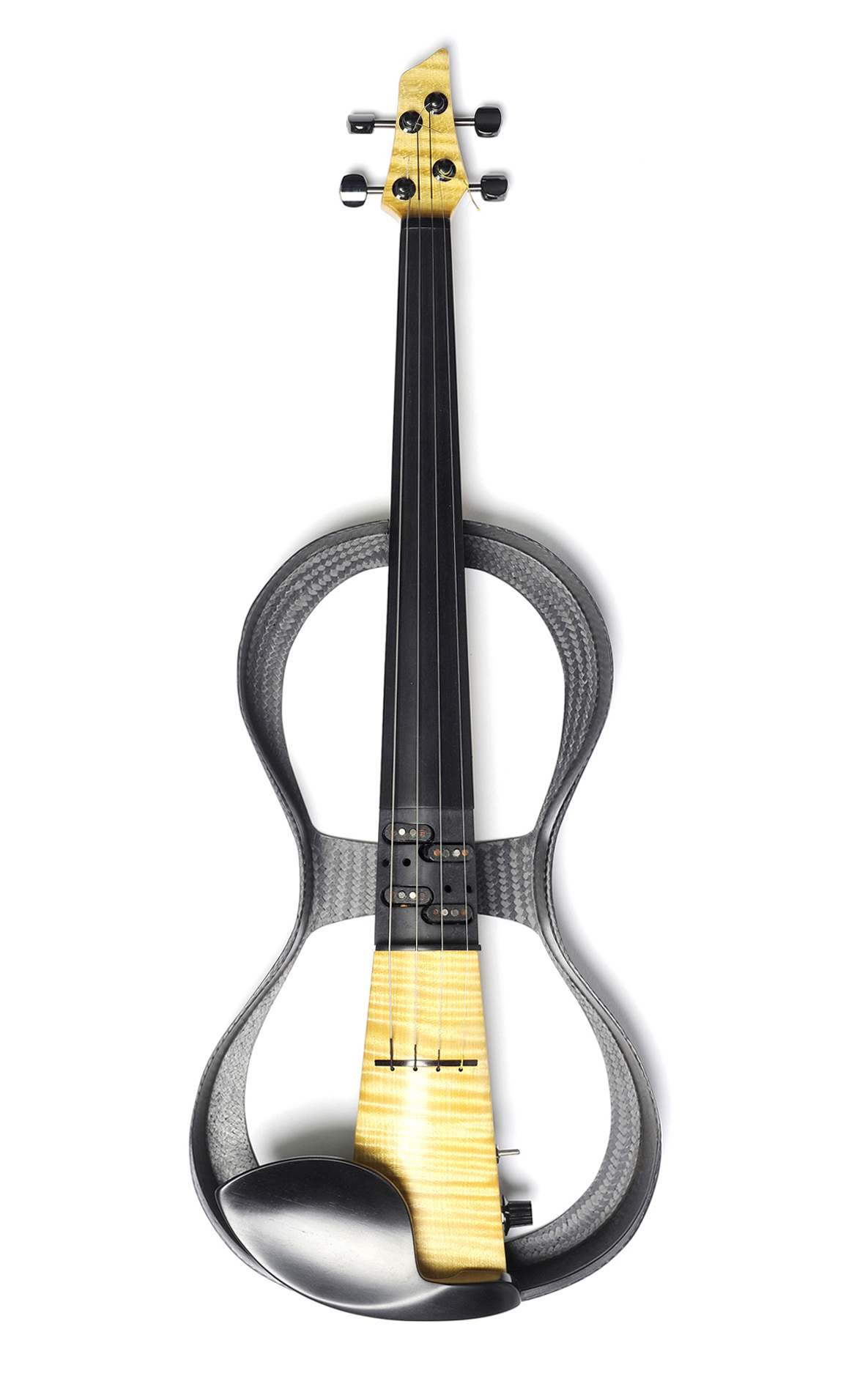Electric violins: an overview of technical details and a guide to selecting the right instrument. How do I determine the quality of an electric violin?
The electric violin is still considered exotic creature in the world of stringed instruments, especially when classical musicians such as Nigel Kennedy play it. There are two widely held prejudices against electric violins – that they are little more than high-tech toys, and they can only really be used in pop music – but neither one seems justified. As a matter of fact, good electric violins can certainly satisfy artistic standards, and they can be used effectively in a wide variety of genres, including but not limited to classical music. Beyond that, their sound also opens up the door to exciting new artistic opportunities.
The electric violin: overview
- Technical standards in creating the sound of an electric violin
- Practical aspects of e-violins
- Quality characteristics of electric violins
Technical standards in creating the sound of an electric violin
Fully electric, battery-operated violins are also known as “silent violins.” Like their classical counterparts, they generate mechanical sound waves, but here an electroacoustic transducer converts the waves into electric voltage, i.e. audio signals. These transducers are usually piezoelectric pick-ups which are placed at specific sites such as under the bridge, and an amplifier makes the sound loud enough to hear. For the most part, electric violins work with active pick-ups that have preamplifiers and equalizers, making it possible to modify the sound. In some cases, particularly when premium models are involved, these elements and effect devices are housed in a separate control box. Electro-acoustic violins can also be played without amplification, and they tend to feature passive pickups that do not allow for the sound to be modified; consequently they are quieter, although their sound is warmer. An external device is recommended for use in larger halls and/or when playing with other amplified instruments: it combines the amplifier and speaker in one device.
Practical aspects of e-violins
Electric violins not only produce greater volume and offer the option of tonal experimentation, they also have several other advantages. For one thing, electric violins are much easier to record in a studio setting: they can simply be hooked up to a computer, and no microphone is needed. Another benefit is that they can be played in such a way that their sound is only audible via headphones. Consequently, musicians can practice in perfect silence, much like they could with the help of the silent practice violin which classical luthiers crafted at the turn of the previous century.
In terms of how they are played, four-string electric violins are not much different than acoustic instruments, which theoretically makes them suitable for beginners as well. A standard violin bow can be used for both. However, an electric violin may have a greater weight, especially if a preamplifier has been installed. Depending on the shape, the weight distribution of an electric violin can also be somewhat different than that of an acoustic. In the past several years, an astonishing array of aesthetic choices has evolved. Since the violin does not need a body to produce sound, it is often left off altogether or given an extravagant design. Today’s electric violins can be found in shapes such as a sound hole, a dollar sign, a note or even a skull. Furthermore, they can also be given frets, additional strings, baritone strings and other extras.
Quality characteristics of electric violins
One point which absolutely has to be kept in mind is the fact that simpler electric violins may not sit well in the player’s hand, and/or they may not lend themselves to the use of a shoulder rest. When it comes to their hands-on playability, this means the differences in quality can be significant. The same thing applies to the sound: only top-tier electric violins can create a truly authentic violin sound. Beginners in particular should be aware of this, because a direct clean transfer of sound is critical during intonation training.
One major step in the development of electric violins was introducing electromagnetic pickups for stringed instruments. In this case, a Humbucker pickup is integrated directly into the instrument, something that previously had only been done for electric guitars and basses. This makes it possible to amplify the sound without ambient noise or feedback effects – one of the largest problems encountered in using piezoelectric pick-ups. Several instrument makers had already tried their hand at this system – including Leo Fender, the inventor of the electric guitar – by the time Munich-based luthier Wolfgang Löffler developed a similarly styled patent-pending model for the electric violin in 2011.
Related articles:
The violin: How to select a violin, provenance, value and appraisal
International violin making competitions -- an overview
The Baroque violin: more than catgut stings
Sell your violin to Corilon violins






